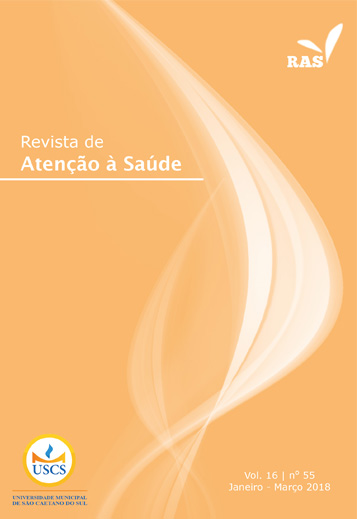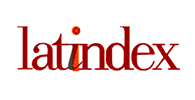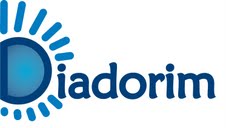RESPIRATORY PHYSIOTHERAPY IN THE POSTOPERATIVE PERIOD OF HIGH ABDOMINAL SURGERY: A REVIEW OF LITERATURE
DOI:
https://doi.org/10.13037/ras.vol16n55.4854Keywords:
Rehabilitation, postoperative care, respiratory exercisesAbstract
Introduction: Respiratory physiotherapy is a therapeutic alternative that acts both in the prevention and treatment of postoperative pulmonary complications and aims at an early reestablishment of pulmonary function. Objectives: To discuss the most recent information, in specific literature, about respiratory physiotherapy in the postoperative period of high abdominal surgery, as well as to confront and present opinions of several authors and studies. Materials and methods: It is characterized as a bibliographic research of the descriptive type, based on a collection of data carried out between January 2017 and March 2017. The bibliographic survey was made based on the access to the database of SciElo, PubMed, LILACS, Bireme, BVS and FIEP Bulletin. Inclusion criteria were to select studies that approached the subject in question (such as clinical trials) until the year 2017. In its turn, exclusion criteria were: articles published before 2005; articles with an exclusive focus on preoperative training; articles exclusively for the evaluation of pulmonary volumes; articles that dealt only with the pulmonary complications resulting from high abdominal surgeries; and articles classified as review studies. Results: Six of the studies found incentive spirometry, four treated conventional respiratory kinesiotherapy, three presented mechanical ventilation (one by the invasive method and the other two by the positive expiratory pressure mask), and seven analyzed respiratory physiotherapy in a generalized manner. Conclusion: With this study, it was possible to discuss the main techniques of respiratory physiotherapy used in the postoperative period of high abdominal surgery, but it was not possible to choose a therapy as the most essential for the treatment. On the other hand, all studies emphasize the importance of physiotherapy for the reduction or prevention of pulmonary complications.
Downloads
References
Martins FS. Complicações pulmonares pós-operatórias de cirurgias abdominais altas e abordagem fisioterapêutica [monografia]. –Tubarão (SC): Universidade do Sul de Santa Catarina; 2005.
Boden I, Browning L, Skinner EH, Reeve J, El-Ansary D, Robertson IK, et al. The LIPPSMAck POP (Lung Infection Prevention Post Surgery – Major Abdominal – with Pre-Operative Physiotherapy) trial: study protocol for a multi-centre randomised controlled trial. Trials. 2015;16(1):573.
Arruda KA, Cantaneo DC, Cataneo AJM. Surgical risk tests related to cardiopulmonar postoperative complications. Comparison between upper abdominal and thoracic surgery. Acta Cir Bras. 2013;28(6):458-66.
Forgiarini Júnior LA, Carvalho AT, Ferreira TS, Monteiro MB, Dal Bosco A, Gonçalves MP, et al. Atendimento fisioterapêutico no pós-operatório imediato de pacientes submetidos à cirurgia abdominal. J Bras Pneumol. 2009;35(5):455-59.
Dias CM, Plácido TR, Ferreira MFB, Guimarães FS, Menezes SLS. Inspirometria de incentivo e breath stacking: repercussões sobre a capacidade inspiratória em indivíduos submetidos à cirurgia abdominal. Rev Bras Fisioter. 2008;12(2):94-9.
Kumar AS, Alaparthi GK, Augustine AJ, Pazhyaottayil ZC, Ramakrishna A, Krishnakumar SK. Comparison of flow and volume incentive spirometry on pulmonary function and exercise tolerance in open abdominal surgery: a randomized clinical trial. J Clin Diagn Res. 2016;10(1):1-6.
Sarmento LF, Pinto V. Fisioterapia e as complicações pulmonares no pós-operatório de esofagectomia: uma revisão integrativa da literatura. Assobrafir Ciência, 2014;5(3):63-80.
Andreollo NA, Lopes LR, Coelho Neto JS. Complicações pós-operatórias após gastrectomia total no câncer gástrico: análise de 300 doentes. Arq. Bras. Cir. Dig. 2011;24(2):126-30.
Caobianco JDR, Souza Filho CM, Bittencourt WS, Salicio MA, Salício VAMM. Estudo de revisão sobre o tempo de recuperação da função respiratória em pacientes submetidos à Cirurgia Abdominal Alta. Uniciências. 2010;14(2):287-301.
Silva FA, Lopes TM, Duarte J, Medeiros RF. Tratamento fisioterapêutico no pós-operatório de laparotomia. J Health Sci Inst. 2010;28(4):341-4.
Santos A. Influência do treino dos músculos inspiratórios na capacidade ventilatória no período pós-operatório de colecistectomia laparoscópica [monografia]. Porto (Portugal): Universidade Fernando Pessoa; 2011.
Santos CA, Rabelo BAS, Borges DL, Silva MGB, Silva TM. Avaliação da força muscular respiratória de pacientes submetidos à colecistectomia videolaparoscópica. Assobrafir Ciência. 2016;7(1):35-42.
Lunardi AC, Miranda CS, Silva KM, Cecconello I, Carvalho CRF. Weakness of expiratory muscles and pulmonary complications in malnourished patients undergoing upper abdominal surgery. Respirology. 2012;17(1):108-13.
Paisani DM, Chiavegato LD, Faresin SM. Volumes, capacidades pulmonares e força muscular respiratória no pós-operatório de gastroplastia. J Bras Pneumol. 2005;31(2):125-32.
Sakai RL, Abrão GMG, Ayres JFV, Vianna PTG, Carvalho LR, Castiglia YMM. Prognostic factors for perioperative pulmonar events among patients undergoing upper abdominal surgery. Sao Paulo Med J. 2007;125(6):315-21.
Filardo FA, Faresin SM, Fernandes ALG. Validade de um índice prognóstico para ocorrência de complicações pulmonares no pós-operatório de cirurgia abdominal alta. Rev Assoc Med Bras. 2002; 48(3):209-16.
Tomich GM, França DC, Diniz MTC, Britto RR, Sampaio RF, Parreira VF. Efeitos de exercícios respiratórios sobre o padrão respiratório e movimento toracoabdominal após gastroplastia. J Bras Pneumol. 2010;36(2):197-204.
Treschan TA, Kaisers W, Schaefer MS, Bastin B, Schmalz U, Wania V, et al. Ventilation with low tidal volumes during upper abdominal surgery does not improve postoperative lung function. Br J Anaesth. 2012;109(2):263-71.
Grams ST, Ono LM, Noronha MA, Schivinski CIS, Paulin E. Breathing exercises in upper abdominal surgery: a systematic review and meta-analysis. Rev Bras Fisioter. 2012;16(5):345-53.
Cangussu DDD. Avaliação de volumes, capacidade e força muscular respiratória em pacientes submetidos à cirurgia abdominal alta eletiva [dissertação]. Brasília, DF: Universidade Católica de Brasília; 2006.
Ueda H, Hoshi T. Aumento da capacidade residual funcional durante cirurgia laparoscópica com elevação da parede abdominal. Rev Bras Anestesiol. 2017;67(3):284-7.
Manzano RM, Carvalho CRF, Saraiva-Romanholo BM, Vieira JE. Chest physiotherapy during immediate postoperative period among patients undergoing upper abdominal surgery: randomized clinical trial. São Paulo Med J. 2008; 126(5):269-73.
Fernandes SCS, Santos RS, Giovanetti EA, Taniguchi C, Silva CSM, Eid RAC, et al. Impacto da fisioterapia respiratória na capacidade vital e na funcionalidade de pacientes submetidos à cirurgia abdominal. Einstein (São Paulo). 2016;14(2):202-7.
Barbalho-Moulim MC, Miguel GPS, Forti EMP, Costa D. Comparação entre inspirometria de incentivo e pressão positiva expiratória na função pulmonar após cirurgia bariátrica. Fisioterapia e Pesquisa. 2009;16(2):166-72.
Chinali C, Busatto HG, Mortari DM, Rockenbach CWF, Leguisamo CP. Inspirometria de incentivo orientada a fluxo e padrões ventilatórios em pacientes submetidos a cirurgia abdominal alta. Conscientiae Saúde. 2009;8(2):203-10.
Trevisan ME, Soares JC, Rondinel TZ. Efeitos de duas técnicas de incentivo respiratório na mobilidade toracoabdominal após cirurgia abdominal alta. Fisioterapia e Pesquisa. 2010;17(4):322-6.
Hanekom SD, Brooks D, Denehy L, Fagevik-Olsén M, Hardcastle TC, Manie S, et al. Reaching consensus on the physiotherapeutic management of patients following upper abdominal surgery: a pragmatic approach to interpret equivocal evidence. BMC Med Inform Decis Mak. 2012;12(1):5.
Gastaldi AC, Magalhães CMB, Baraúna MA, Silva EMC, Souza HCD. Benefícios da cinesioterapia respiratória no pós-operatório de colecistectomia laparoscópica. Rev Bras Fisioter. 2008;12(2):100-6.
Ribeiro S, Gastaldi AC, Fernandes C. The effect of respiratory kinesiotherapy in patients undergoing upper abdominal surgery. Einstein. 2008;6(2):166-9.
Possa SS, Amador BA, Costa AM, Sakamoto ET, Kondo CS, Vasconcellos ALM, et al. Implementation of a guideline for physical therapy in the postoperative period of upper abdominal surgery reduces the incidence of atelectasis and length of hospital stay. Rev Port Pneumol. 2014;20(2):69-77.
Zancan M, Fozza FC. Fisioterapia no pré e pós-operatório de cirurgia abdominal e torácica. EFDeportes. 2013;18(179):1.
Zhang XY, Wang Q, Zhang S, Tan W, Wang Z, Li J. The use of a modified, oscillating positive expiratory pressure device reduced fever and length of hospital stay in patients after thoracic and upper abdominal surgery: a randomised trial. J Physiother. 2015;61(1):16-20.
Yağlıoğlu H, Köksal GM, Erbabacan E, Ekici B. Comparison and evaluation of the effects of administration of postoperative non-invasive mechanical ventilation methods (CPAP and BiPAP) on respiratory mechanics and gas exchange in patients undergoing abdominal surgery. Turk J Anaesthesiol Reanim. 2015;43(4):246-52.
Smith PR, Baig MA, Brito V, Bader F, Bergman MI, Alfonso A. Postoperative pulmonary complications after laparotomy. Respiration. 2010;80(4):269-74.
Joia Neto L, Thomson JC, Cardoso JR. Complicações respiratórias no pós-operatório de cirurgias eletivas e de urgência e emergência em um Hospital Universitário. J Bras Pneumol. 2005;31(1):41-7.
Downloads
Published
Issue
Section
License
Policy Proposal for Journals offering Free Delayed Access
Authors who publish in this magazine agree to the following terms:
- Authors maintain the copyright and grant the journal the right to the first publication, with the work simultaneously licensed under a Creative Commons Attribution License after publication, allowing the sharing of the work with recognition of the authorship of the work and initial publication in this journal.
- Authors are authorized to assume additional contracts separately, for non-exclusive distribution of the version of the work published in this magazine (eg, publishing in institutional repository or as a book chapter), with the acknowledgment of the authorship and initial publication in this journal.
- Authors are allowed and encouraged to publish and distribute their work online (eg in institutional repositories or on their personal page) at any point before or during the editorial process, as this can generate productive changes, as well as increase impact and citation of the published work (See The Effect of Open Access).






